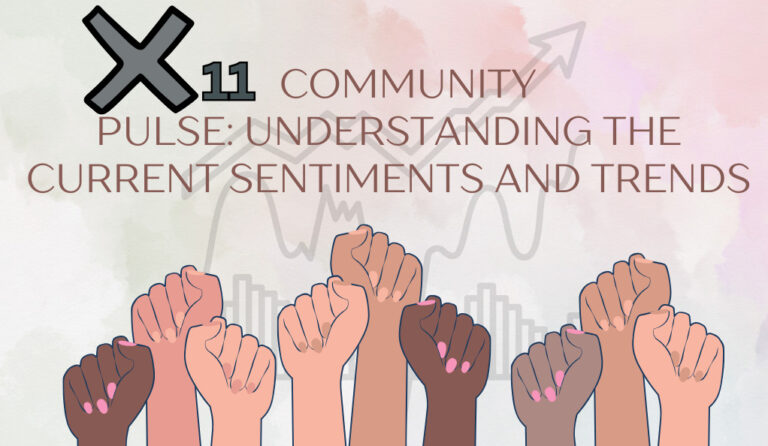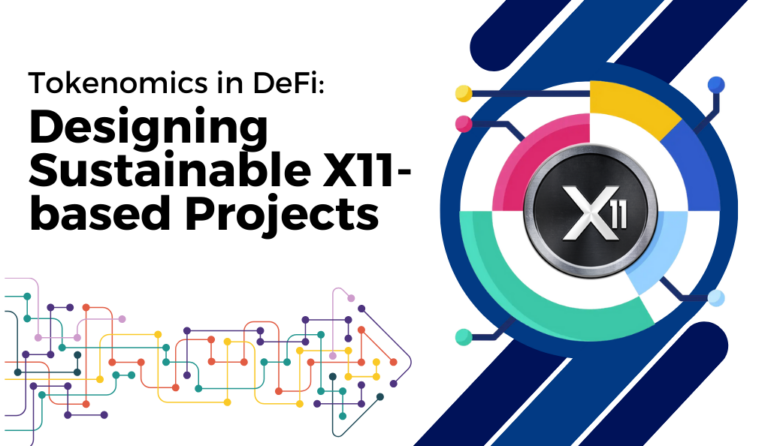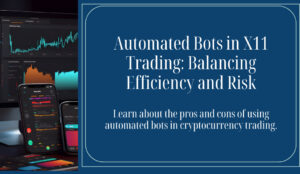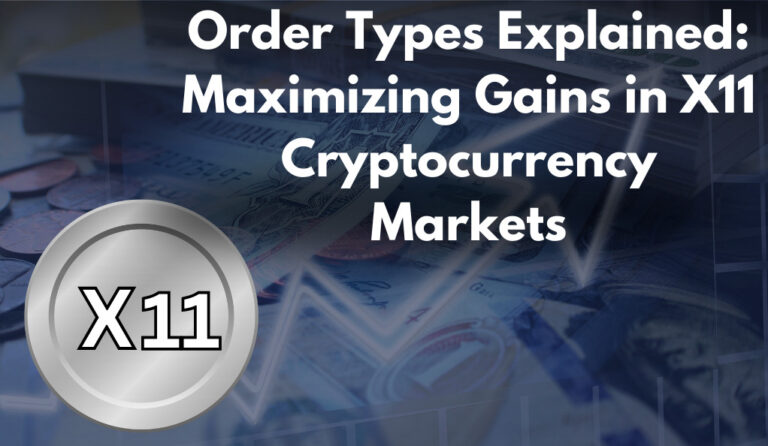The world of cryptocurrencies is vast and varied, with hundreds of digital coins and tokens vying for attention. Among these, a particular group of cryptocurrencies stands out, not just for their technological prowess but also for their potential to reshape local communities. These are the X11 cryptocurrencies.
What is X11?
X11 is not a cryptocurrency in itself but an algorithm—a set of rules and procedures for performing a task. In the world of cryptocurrencies, algorithms determine how new digital coins are created and how transactions are verified. X11 is unique because it doesn’t rely on just one hashing function, like Bitcoin’s SHA-256. Instead, it uses 11 different hashing functions, making it one of the most advanced and secure algorithms in the cryptocurrency space.
| Hashing Function | Description |
|---|---|
| BLAKE | Known for its speed and security. |
| BLUE MIDNIGHT WISH (BMW) | Efficient in both software and hardware implementations. |
| Grøstl | Provides a high level of security and performance. |
| JH | Part of the NIST hash function competition. |
| Keccak | The foundation for the SHA-3 standard. |
| Skein | Uses a unique Threefish block cipher. |
| Luffa | Combines components from different designs. |
| CubeHash | Designed for parallelism and simplicity. |
| SHAvite-3 | A fast and secure function. |
| SIMD | Uses a single instruction for multiple data. |
| ECHO | Efficient and suitable for both hardware and software. |
The Vision Behind X11: ASIC Resistance
When Evan Duffield, the core developer of Dash (previously known as Darkcoin), introduced X11 in early 2014, he had a clear vision: to prevent the dominance of ASIC miners. ASICs, or Application Specific Integrated Circuits, are powerful machines designed solely for mining specific algorithms. Their introduction into the Bitcoin mining ecosystem led to a significant centralization of mining power, pushing out regular users who mined with general-purpose hardware like CPUs and GPUs.

Duffield’s X11 was a response to this trend. By combining 11 different hashing algorithms, he hoped to create a system that was resistant to ASICs, ensuring a more decentralized and democratic mining process. This would, in turn, allow for greater participation from local communities, fostering a more inclusive digital economy.
The Rise of ASICs in X11 Mining
As the popularity of X11-based cryptocurrencies grew, so did the attention from the broader mining community. The promise of a decentralized and ASIC-resistant algorithm was alluring, especially to those who had witnessed the monopolization of Bitcoin mining by powerful ASIC machines.
The Allure of ASICs
ASICs, by design, are incredibly efficient at what they do. They are tailored to execute specific tasks, and when it comes to mining, this means they can process hashing functions at lightning speeds compared to general-purpose hardware. This efficiency translates to more mined coins in a shorter time, leading to increased profitability for ASIC miners.
For X11, the initial promise was that its complexity, stemming from the use of 11 different hashing functions, would deter the development of ASICs tailored for it. However, the lucrative nature of cryptocurrency mining meant that it was only a matter of time before hardware developers took on the challenge.
The Turning Point
In early 2016, the first ASICs designed for X11 began to emerge. These machines, with their unparalleled hashing power, started to dominate the X11 mining scene. Brands like Antminer, Baikal, and FusionSilicon released powerful machines specifically tailored for X11, rendering GPU and CPU mining almost obsolete for this algorithm.

The introduction of these ASICs had a profound impact on the X11 mining ecosystem. The very thing that X11 sought to prevent—centralization of mining power—was now becoming its reality.
Implications for the Community
The dominance of ASICs in X11 mining had mixed effects. On the one hand, it led to increased security for the network. With more hashing power, the blockchain became more resistant to attacks. On the other hand, it pushed out individual miners who couldn’t afford these expensive machines, leading to a concentration of mining power in the hands of a few.
This centralization went against the very ethos of X11 and posed questions about the future of the algorithm and its cryptocurrencies. Would they remain decentralized and community-driven? Or would they become yet another tool in the hands of a powerful few?
Top X11 Cryptocurrencies and Their Impact
The X11 algorithm, despite the challenges posed by ASICs, has been the foundation for several cryptocurrencies. These digital assets, each with its unique vision and application, have made significant strides in various sectors, from finance to governance.
Dash: Leading the Pack
Dash, originally known as Darkcoin, is the most prominent cryptocurrency utilizing the X11 algorithm. Created by Evan Duffield, it was designed to offer faster transaction times and enhanced privacy compared to Bitcoin. Over the years, Dash has introduced features like InstantSend and PrivateSend, ensuring quick transactions and optional transaction privacy, respectively.
Beyond its technical features, Dash has been at the forefront of community-driven initiatives. The Dash DAO (Decentralized Autonomous Organization) is a testament to this, allowing users to propose and vote on projects, ensuring that the community has a say in the direction the cryptocurrency takes.
Other Notable X11 Cryptocurrencies
- PACcoin (PAC): Positioned as a digital payment network, PACcoin aims to simplify and streamline peer-to-peer transactions. With a focus on community involvement, PACcoin has initiatives that support charitable causes and social outreach.
- Polis (POLIS): Polis stands out for its emphasis on governance. It allows its community to propose and vote on projects, ensuring a decentralized decision-making process. Polis also focuses on real-world applications, promoting the use of its digital currency for everyday transactions.
- MonetaryUnit (MUE): While its Proof of Work phase is over, MonetaryUnit made its mark as a coin that aimed to be accessible to everyone, emphasizing ease of use and wide adoption.
- CannabisCoin (CANN): A niche cryptocurrency, CannabisCoin was developed to simplify transactions for medical marijuana dispensaries. It represents a fascinating intersection of the crypto world with the growing legal cannabis industry.
Grassroots Movements: Beyond the Code
The true power of X11 cryptocurrencies lies not just in their technical prowess but in their ability to foster grassroots movements. These digital assets have enabled communities worldwide to challenge traditional financial systems, promote decentralized governance, and even support social causes.
For instance, Dash has funded community projects in countries like Venezuela, providing an alternative to the hyperinflated local currency. PACcoin’s charitable initiatives have made a tangible difference in communities, showcasing the potential of cryptocurrencies to drive positive change.
Challenges and Criticisms
Every technological advancement, no matter how revolutionary, faces its share of challenges and criticisms. X11 cryptocurrencies are no exception. As they’ve grown in popularity and adoption, they’ve also encountered hurdles and skeptics.
The ASIC Dilemma
The primary challenge, as previously discussed, is the rise of ASICs tailored for the X11 algorithm. While these machines have bolstered the network’s security, they’ve also reintroduced the centralization issue that X11 sought to avoid. This centralization of mining power has raised concerns about:
- Fair Distribution: With ASICs dominating the mining scene, individual miners with less powerful equipment find it challenging to compete, leading to a skewed distribution of rewards.
- Network Control: Centralization means that a small group of miners could potentially control a significant portion of the network’s hashing power. This concentration could make the network vulnerable to attacks or manipulations.
Sustainability Concerns
Cryptocurrency mining, in general, has faced criticism for its environmental impact. The energy-intensive nature of Proof of Work algorithms, including X11, has raised sustainability concerns. As the crypto industry grapples with its carbon footprint, there’s a growing call for more energy-efficient consensus mechanisms.
Market Volatility
Like other cryptocurrencies, X11-based coins are subject to market volatility. Price fluctuations can deter mainstream adoption, as potential users might be wary of the unpredictability associated with these digital assets.
The Broader Cryptocurrency Landscape
While X11 has its unique features and challenges, it’s essential to understand its place in the broader cryptocurrency ecosystem.
- Comparison with Other Algorithms: Beyond X11, there are several other Proof of Work algorithms, such as SHA-256 (used by Bitcoin) and Scrypt (used by Litecoin). Each has its advantages, challenges, and ASIC resistance levels. X11’s multi-hash function design sets it apart, offering a blend of security and complexity.
- Shift to Proof of Stake: With environmental concerns on the rise, many cryptocurrencies are exploring or shifting to Proof of Stake (PoS) consensus mechanisms, which are less energy-intensive than Proof of Work. Ethereum’s move to Ethereum 2.0 with a PoS model is a notable example.
Conclusion: The Future of X11 and Local Communities
The journey of X11 and its associated cryptocurrencies has been a testament to the power of innovation, community involvement, and the vision of a decentralized future. While challenges exist, the potential for positive impact remains immense.
Local communities worldwide stand to benefit from the decentralized ethos of X11 cryptocurrencies. Whether it’s through direct financial empowerment, community-driven projects, or challenging traditional power structures, the promise of X11 remains strong.
As the crypto landscape evolves, the core values of decentralization, community involvement, and inclusivity that X11 champions will continue to shape its trajectory and influence. The future, while uncertain, holds the promise of a more equitable and decentralized digital world.
At axerunners.com, our goal is to furnish well-rounded and trustworthy information regarding cryptocurrency, finance, trading, and stocks. Nonetheless, we avoid providing financial advice and instead encourage users to conduct their own research and meticulous verification.
Read More












